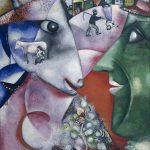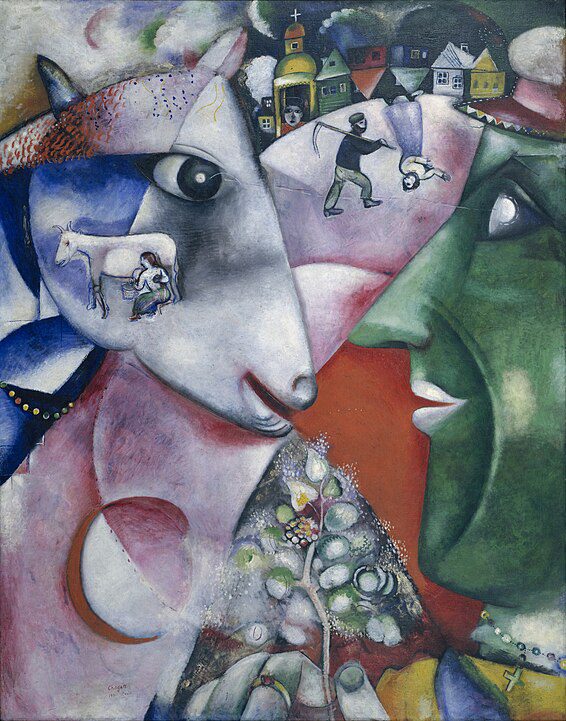
Marc Chagall was born Moishe Shagal on July 7, 1887, in Liozna, near the city of Vitebsk (now in Belarus), part of the Russian Empire. He was the eldest of nine children in a close-knit Jewish family. His father was a herring merchant, and his mother ran a small grocery store. From a young age, Chagall was exposed to traditional Jewish culture and the colorful life of his hometown, elements that would deeply influence his art throughout his life.
In 1906, Chagall moved to Saint Petersburg, which was then the capital of the Russian Empire and a center for artistic innovation. Here, he attended the Imperial Society for the Protection of the Arts and studied under Nikolai Roerich, among others. It was during this period that he began to blend his personal, dreamlike vision of the world with the avant-garde trends of the time.
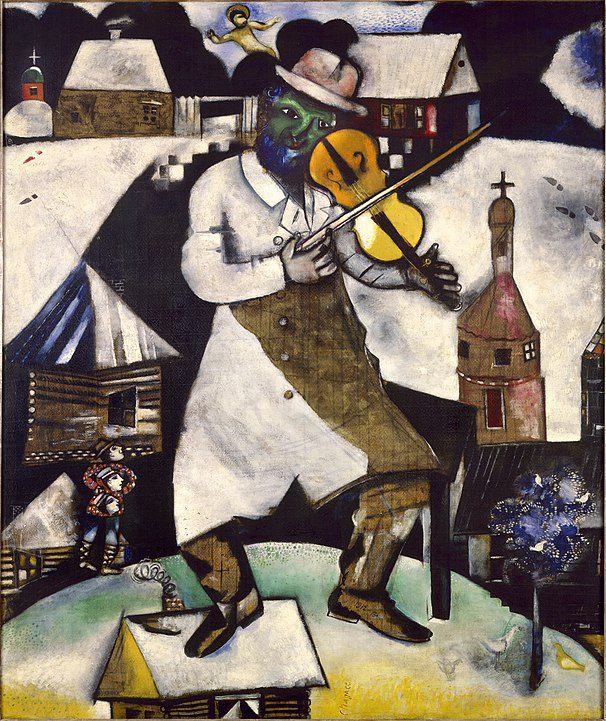
Chagall’s early works were heavily influenced by his Jewish heritage, featuring themes from the Bible and Jewish folklore. His vibrant palette and whimsical subjects quickly set him apart from his contemporaries. In 1910, Chagall moved to Paris, the epicenter of the art world, where he joined the circle of avant-garde artists in the Montparnasse district. There, he absorbed the influences of cubism, fauvism, and symbolism, which he melded with his own unique vision, characterized by floating figures, fantastical scenes, and a poetic, emotional depth.
Nostalgia Fueled Genius
During his early years in Paris, Chagall created some of his most famous paintings, such as “I and the Village” (1911), which reflects his childhood in Vitebsk and his feeling of being an outsider in the modern world. Despite the outbreak of World War I, Chagall continued to develop his unique style, marked by a deep sense of nostalgia and a longing for his homeland.
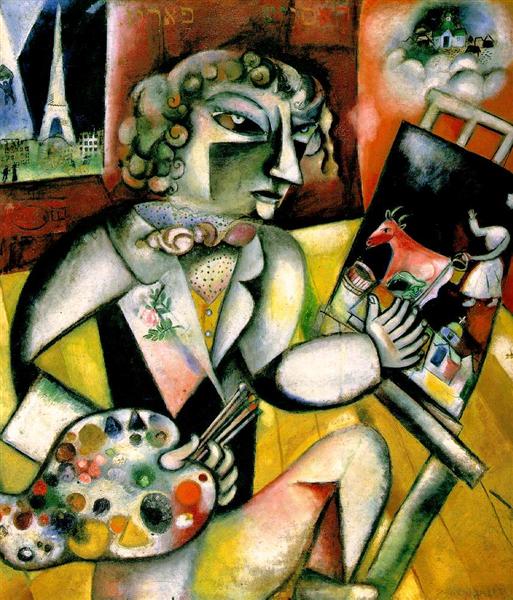
In 1914, Chagall returned to Vitebsk, intending to visit his family for a short time. However, the war and subsequent Russian Revolution trapped him in Russia. During this period, he became involved in the Russian avant-garde movement and was appointed the Commissar of Art for the Vitebsk region after the Revolution. He founded the Vitebsk Arts College, which became a significant center for avant-garde art. However, ideological disputes with other artists led to his resignation in 1920.
In 1923, Chagall and his wife, Bella Rosenfeld, whom he had married in 1915, left Soviet Russia for France, where they would live for most of their lives. The interwar years were a period of prolific work for Chagall, during which he expanded his artistic repertoire to include book illustrations, stage sets, and costumes for ballets and operas. His illustrations for the “Fables of La Fontaine,” the “Bible,” and other works are particularly noteworthy, blending his poetic imagination with literary classics.
Bad Times
The rise of National Socialist Germany and the outbreak of World War II forced Chagall to flee Europe. In 1941, he and his family settled in the United States. The death of his beloved wife, Bella, in 1944 plunged Chagall into a deep depression, which significantly affected his work. His paintings from this period are characterized by darker tones and themes of loss and mourning.
After the war, Chagall returned to France, where he spent the remainder of his life. The post-war years were marked by a series of large-scale projects and commissions that would cement his reputation as one of the 20th century’s most versatile and prolific artists. Among these were the ceiling for the Paris Opéra (1963), murals for the Metropolitan Opera in New York (1966), and stained-glass windows for the Hadassah University Medical Center in Jerusalem (1962), as well as for cathedrals in Reims (1974) and Metz (1968).
Chagall’s later works continued to explore themes of love, memory, and Jewish tradition, but with a greater emphasis on color and light. His use of stained glass, in particular, allowed him to experiment with light as a medium, creating vibrant, luminous compositions that blend spiritual and poetic elements.
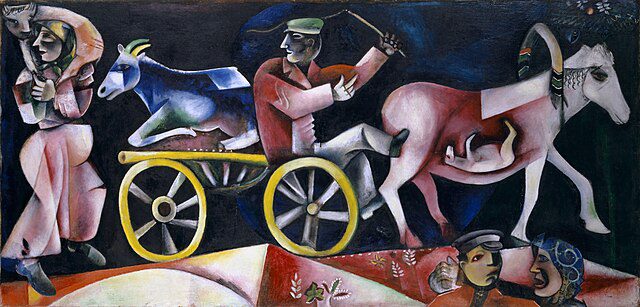
Marc Chagall passed away on March 28, 1985, in Saint-Paul-de-Vence, France, at the age of 97. His legacy is that of an artist who transcended the boundaries of nationality, religion, and artistic movement to create a body of work that is universal in its appeal. Chagall’s paintings, with their dreamlike quality and emotional depth, continue to captivate and inspire audiences around the world. He remains a symbol of the power of art to convey the deepest aspects of the human experience, blending reality with fantasy, the earthly with the divine, and the personal with the universal.



